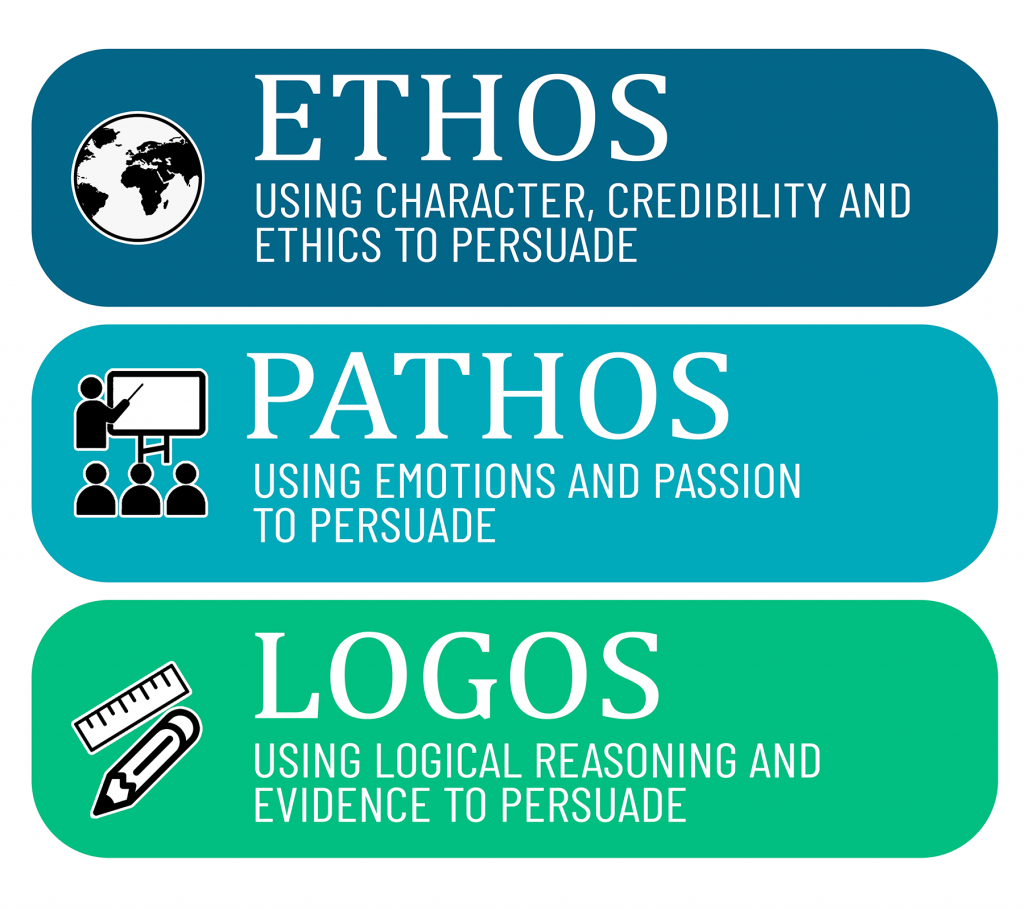As my students work on developing their writing skills, one important concept that we get into is rhetoric and rhetorical argument devices. When we are exposed to argument in some form or other, there are three key parts to the argument that are used to try to persuade us. These are ethos, pathos, and logos, which is the use of ethics, emotions, and logic in order to make that argument.
Have you ever heard of these before? If not, here is a great article about them, “Ethos, Pathos, and Logos Definition and Examples.”
We are bombarded by these concepts on a daily basis, even if we are not aware of it. This is why we need to make ourselves comfortable with understanding these strategies so we can identify them being used against us.
For example, if we see an advertisement that shows dogs outside in the snow, looking sad, chained up to something, we can recognize that this advertisement is trying to work on our emotions through pathos in order to make the audience feel something specific – in this case, maybe sadness, outrage, or a desire to help and get involved.
If the same advertisement then states, “250,000 animals every year are victims of animal hoarding” and “every year, more than 10 million animals die from abuse in the US alone” (Hrubenja, 2022), then we are seeing a logos argument that appeals to us through data that this is a serious issue and needs to be addressed.
If at the end of the advertisement, we see something like The Humane Society of the United States was founded in 1954 and partners with many veterinary programs and care centers or sanctuaries to provide direct care to animals, then we might be looking at an argument of ethos – one that is arguing that the source is a credible source. It has existed for a period of time and works with people in that field in order to “do something.”
Remember, these strategies are:
- Logos: Argument by logic. (making logical arguments to convince the reader of your viewpoint, often with using data or statistics too)
- Pathos: Argument by emotion. (using emotion to appeal to the reader, such as sympathy)
- Ethos: Argument by character. (demonstrating character as a way of conveying expertise in the topic. For instance, how you dress, tone, appearance, and the language you use are all part of demonstrating character)

With these three devices, students and people in general can make arguments that can be persuasive. Using the proper amount of logos ensures that the argument has validity in the data and statistics it presents. Using pathos ensures that the audience cares about the argument and the end goals of the argument. Using ethos ensures that the audience sees the author of the argument as a credible and reliable source.
Each of these pieces is crucial to a strong argument, but we, as the audience, also need to be aware of when any of these are used in a faulty way that may “look” like a good argument, but actually isn’t!
Reference
Ethos, Pathos, and Logos Definition and Examples. (n.d.). Pathos Ethos Logos. Retrieved from https://pathosethoslogos.com/
Hrubenja, A. (April 14, 2022). 32 Disturbing Animal Abuse Statistics (2022 Update). Retrieved from https://petpedia.co/animal-abuse-statistics/